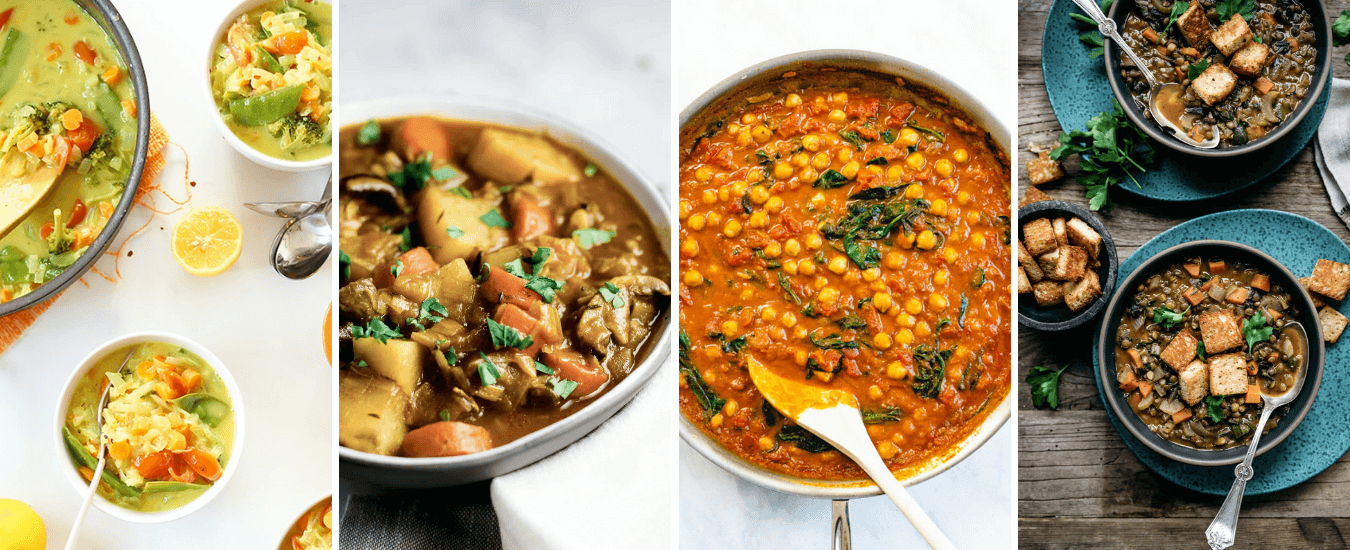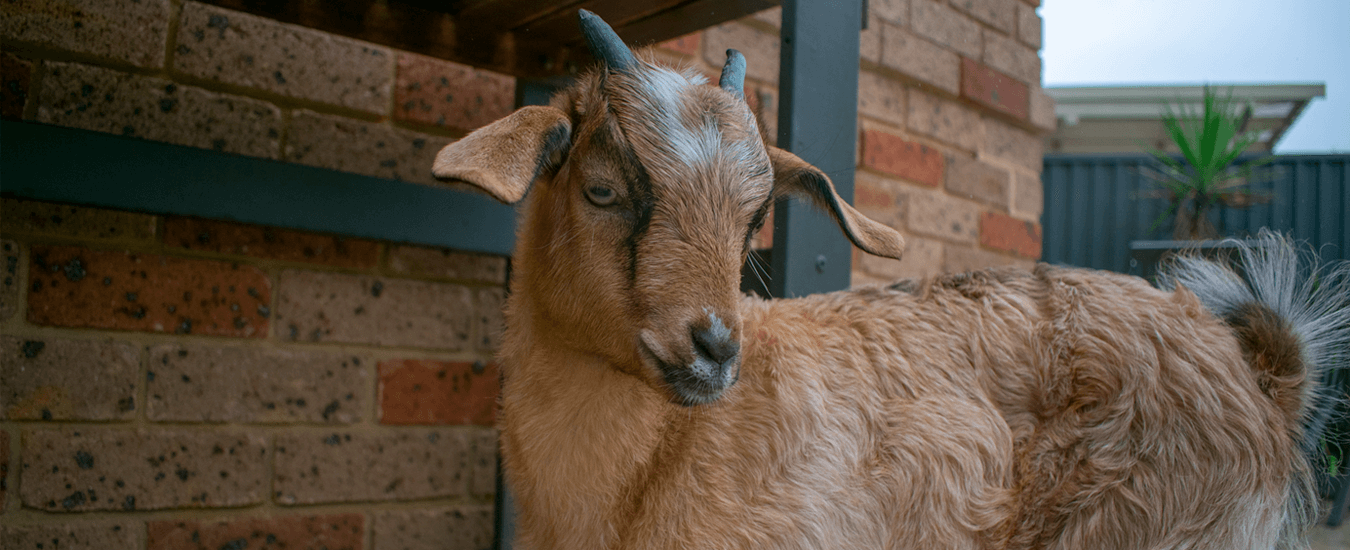
All About Goat
About goats
Goats are very vocal animals. They even murmur in their sleep [1]. They can sense subtle emotional changes in each other's vocal calls [2]. Similar to us, they can also discern the calls of friends from those of strangers [3]. This means they can distinguish between other goats’ emotions, such as happiness or sadness, simply by listening to their voices [4].
Like many other ungulates, goats live in large social groups where females generally give birth at the same time [5]. After birth, they form fast and strong relationships with their offspring [6]. These relationships, referred to as “imprinting”, are formed almost immediately [7]. They also quickly learn to recognise their babies within 4 hours of birth and can identify them by voice by 48 [8]. Like cows, goats lick their newborns and establish a bond by doing so [9].
The industry
Annually, around 450 million goats are killed for human consumption [10], with over 1.65 million individuals slaughtered in Australia every year [11]. Australia has become the largest exporter of goats and goat meat in the world [12], sending to the US, Taiwan, South Korea, Malaysia, and Trinidad and Tobago [13].
Goats were introduced into Australia in 1788 with the first fleet, and were released onto islands and various areas of the mainland as an “emergency” food source [14]. The Australian Government now considers wild goats “pests” because they compete with native animals, as well as farmed sheep and cattle, and degrade the land [15].
90% of goats killed are actually “semi-wild” meaning they are part of a partially managed system. This method involves trapping animals from the wild and occasionally introducing a buck to breed with females for “higher quality” products [16].
Mustering (via motorbikes, dogs, and light aircraft [17]), trapping, transportation, and slaughter are all incredibly stressful for the goats, as most have had little interaction with humans. While being chased, animals can become injured due to frantically trying to escape. There is a chance that mothers will have been separated from their young during mustering. If she is unable to escape, her kid could die of starvation, and if trapped they can easily get trampled [18].
Those who are not killed in Australia are sent overseas on the live-export ships [19]. Those that survive the horrendous journey will either be used for breeding or slaughtered shortly after arrival [20]. The number of goats sent on the death ships changes year to year, however, in 2018, over 21,000 individuals were loaded onto the ships, accounting for 4% of total export value [21].
Animals are trapped on the ships for several weeks with unnatural social structures and are unable to exhibit any of their natural behaviours
The environment
While the goat meat and export industry claims they are helping with Australia’s goat “problem”, this claim is flawed. Producers and exporters rely on a steady supply of goat-meat, meaning they need wild-goats to continue existing. Wild and semi-wild goats require less input in terms of food, water, and staff costs, thus increasing profits. This is why, after years of killing millions of goats, they still exist and are prominent in Australia’s environment.
In areas where there is a strong presence of dingoes and other predators, there are low population numbers of wild goats. Yet, while the industry claims goats are pests that need to be culled, they also say they need protection from predation, in particular dingoes and wild dogs. Other predators include foxes, pigs, and eagles. As a result, the industry promotes the culling of predator species, through baiting, trapping and shooting, or a combination of all, and also encourages the use of fences and guard dogs to reduce kids being taken [22]. If the industry wanted to improve the environment by reducing goat numbers, they would not prevent wild animals from naturally keeping numbers down.
Our health
Goat meat is known as red meat, which studies have classified as group 2A carcinogen and can cause cancer [23]. Research has found that red meat contains the chemical haem, which is broken down in the gut, and as a result, N-nitroso chemicals are formed - these have been found to damage the cells that line the bowel, which can lead to bowel cancer. This research has resulted in the Cancer Council advising people to limit their consumption of red meat, and include more legumes, nuts, and seeds to their diets [24]. Red meat has also been linked to heart disease, diabetes, and premature death [25].
The repeated violent work environment of slaughterhouse workers results in several workers suffering from a range of mental and psychological health illnesses, like perpetration-induced traumatic stress (PITS), post-traumatic stress disorder (PTSD), paranoia, depression, and cognitive dissonance. These can also end up causing drug and alcohol abuse, an increase in violence towards people and domestic animals, and increased crime rates [26].

Vegan “Goat” Recipes
While you may have never eaten goat, every year, around 450 million goats are killed for human consumption. These unique and sentient beings deserve to live a life free from harm. Currently, there are not any mock meat alternatives for goat meat, however, their body parts are commonly used in curries and stews, so we have included some delicious, wholesome vegan recipes you can make instead.

Meet Shakira
This adorable little kid was found all alone in the middle of the bush when she was just a week old. There is a chance that she was separated from her mother during mustering or a hunt. With no mother or herd in sight, the people who found her couldn’t bear to leave her there and took her home. Their mum instantly fell in love and named her Shakira. She spent her days playing with and following her carer, and her nights snuggling her. After a month or so, her carer knew that life in a suburban house was no place for a goat and that she would eventually need property and some friends to run around with.
Her carer called the Animal Liberation office, asking us if we could help find Shakira a forever home, which is when she came into my care! I had to bring her to a foster family who was going to care for her until she was big enough to go to her forever home. When she first arrived she was a little shy, but after quickly exploring the house and a bottle of milk, her vibrant personality began to shine. She loved to eat, run, jump, climb on the furniture, cuddle, and play – just like a little puppy. She was curious about everything I was doing and didn’t want to leave my side.
After settling in, Shakira was introduced to my dogs. They were equally confused by each other, but after a few nervous sniffs, she ended up chasing them around! She was frolicking around, kicking her legs in the air, and showing she wanted to play with soft head bumps. In adults headbutting is to establish dominance, but in kids to is a sign of wanting to play and friendship.
After a few weeks with her foster carer, Shakira was big enough to go to her forever home! She is now living in safety with other goat friends and she will stay here for the rest of her life.
In Australia, wild goats are an unwanted species and are hunted or caught and killed for human consumption. During hunting or the stressful and terrifying mustering and trapping process, mother goats can become separated from their young – either of which may have been the case for Shakira and her mother. If Shakira had have been left in the wild, she could have ended up on someone’s plate.
For goats just like Shakira, please choose to be kind to animals.







